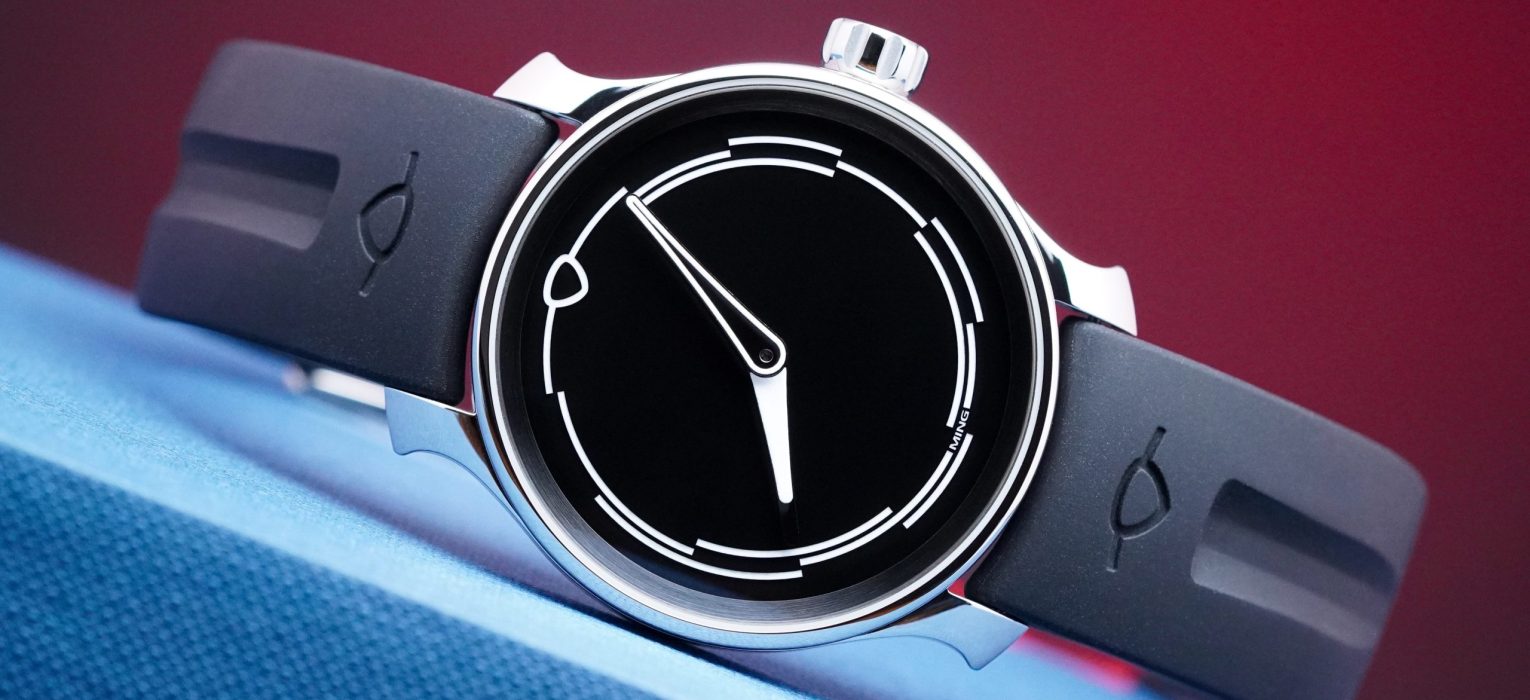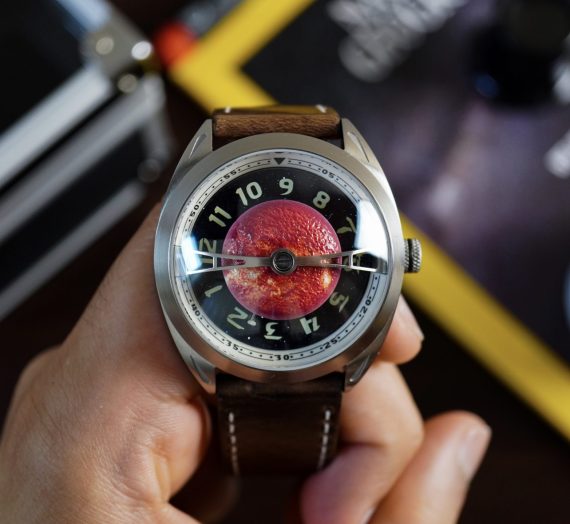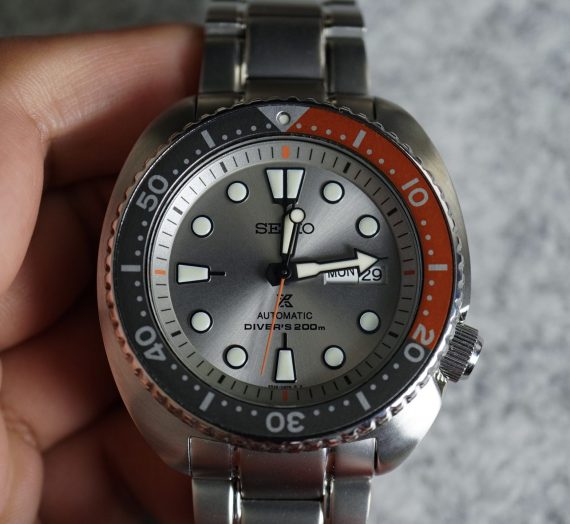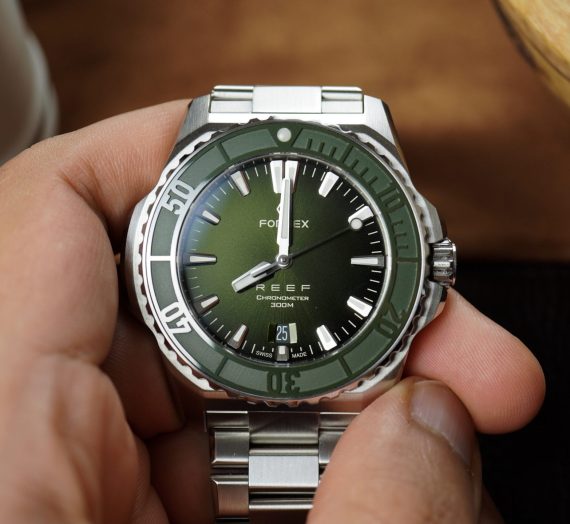Disclaimer: this video/review was not sponsored by MING or any other entity.
Video
Review
One of the things I admire most about MING is how quickly they have built a diverse collection of designs over their relatively short 7-year lifespan. What’s even more impressive is the speed at which their design language, materials, and innovations have evolved through limited runs of unique models, many of which were never recreated. Unfortunately for me, this makes it very easy to be a returning customer, and also build an unusually large collection of MING watches.
Certain collections, like the 17 series, enjoyed a longer lifespan, with significant design evolution from the 17.01 to the 17.09. In contrast, others such as the 27 series and the 19 series produced exceptional models in limited quantities with a design style that was sadly never revisited. Recently, the 37 series has become MING’s most versatile line, much like the 17 series before it. The 37 series case has served as a platform for a wide range of designs, spanning various price points – from the 3,250 CHF MING 37.07 to the Special Projects Cave 37.04 Tantalum Monopusher, rumored to cost upwards of 50,000 CHF. This willingness to re-use the 37 series platform has given rise to models like the 37.04 Monopusher Chronograph, 37.05 Moonphase, 37.07 Mosaic, 37.08 Sand and Aventurine, and the 37.09 Bluefin Diver.
Today, we’re taking a closer look at the newest addition to the 37 series, the 37.02 Minimalist. To me, this feels like a spiritual successor to both the 27.01 and the 19.05. The 37.02 Minimalist marks a special occasion for MING for a few reasons:
Horologer MING SA: It’s the first release from MING’s newly inaugurated Swiss entity. Ironically, this also makes it the first MING watch that cannot officially carry the “Swiss Made” label, as Ming Thein now handles design and engineering R&D from his base in Malaysia. This further highlights the limitations of the “Swiss Made” title and should make you question its significance.
MING Polar White: The 37.02 Minimalist also showcases MING’s latest development, “MING Polar White” a proprietary luminous material that emits light across all wavelengths, resulting in lume that is truly white, and also quite bright!
With a retail price of 3,250 CHF, the 37.02 Minimalist is available without any restriction on manufacturing quantity (or least I think it is) and is ready to ship immediately – marking one of the few instances in a long time where MING has announced a new watch with stock on hand!
Let’s check it out!
Case
The case of the MING 37.02 Minimalist is identical to previous 37 series models like the 37.05 v1 and v2. Despite featuring an automatic Sellita SW300 movement instead of the manually wound SW210, the thickness remains nearly the same. I measured the case at 38mm in diameter, 44.25mm from lug tip to lug tip, and 10.85mm in overall thickness, which includes the curved top and bottom sapphire crystals. The mid-case section itself is sleek, measuring just over 3mm in height, maintaining the refined profile that the 37 series is known for.

The design, build quality, and finishing are consistent with earlier 37 series models. So I can happily confirm that taking away the “Swiss Made” designation has had no impact on the quality of these watches. What I particularly appreciate about the 37 series is the oversized crown. While it was more impactful on a manually wound movement, it remains equally ergonomic and visually balanced in this automatic variant, with an impressive 6.75mm diameter.

Although the crown doesn’t screw down, the watch is still rated for 100 meters of water resistance, offering sufficient durability for everyday wear. And that’s great because this watch does feel like it would make a great daily driver.

Overall, while I appreciate the design of the 37 series cases, I’ve seen it so frequently now that it’s hard to get overly excited. That said, MING continues to deliver excellent build quality, finishing, and attention to detail, making it a solid and reliable choice.
Dial
As the name suggests, the design of the dial shows plenty of restraint, while operating within the tenets of the MING design language. The outermost element is a subtle brushed black chapter ring, consistent with other 37 series models. The base of the dial is a deep, glossy black, appearing much darker than a typical glossy finish since it is made of sapphire. This creates a visual effect where the dial elements seem to float within a dark void, enhancing the minimalist appeal.

At the 12 o’clock position, the brand’s distinctive “snoot” logo serves as the index, while subtle white branding appears at 6 o’clock. The hour indices are marked by an innovative, futuristic three-layered interrupted concentric ring pattern. The asymmetric distribution of these segments gives each five-minute or hour interval a slightly unique appearance, adding visual intrigue without disrupting the minimalist design.

This is my first experience with MING’s latest handset. Having owned previous 37 series watches, I much prefer this new design – it is easier to read and feels more MING-like in design. The hands are well-finished, featuring a large lumed segment on the hour hand and an outlined lume section for the minute hand. Both hands have a glossy, mirror-polished finish that matches the dial. At certain angles, the non-lumed portions of the hands seem to disappear entirely, doubling down on that “floating above the void” appearance.


Overall, the dial is impressive, though challenging to capture accurately in photographs. It looks far more striking in person, especially under varying lighting conditions. As with many MING watches, the Minimalist plays with visual inversion under specific lighting, creating an almost hypnotic effect that adds to its allure and makes it a fun, albeit difficult, subject to photograph.
Lume
As previously mentioned, the 37.02 debuts the brand’s latest proprietary luminous pigment compound, called MING Polar White. To understand what makes this compound unique, it helps to explore how lume works and why different colors perform differently.
Typical luminous pigments, like Super-LumiNova and LumiBrite, use phosphors such as strontium aluminate, doped with activator elements to control brightness and longevity. The glow color is determined by the specific rare earth elements or transition metals used in the doping process. Generally, blue and green luminescent materials glow the brightest, while colors like orange and red are dimmer due to their narrower emission spectrum.

Achieving a white glow with luminescent materials is particularly challenging because most phosphors emit light at specific wavelengths, rather than across the entire visible spectrum, which is required to produce true white light. MING has managed to create a pigment that not only appears white in daylight but also emits a bright white glow in the dark – a result that is both unexpected and impressive. Having grown accustomed to the typical blue and green lume shades, the Polar White compound almost feels surreal, resembling the clarity of a high-definition digital display.

MING hasn’t disclosed how they achieved this effect, but since no single phosphor compound can emit evenly across the entire visible spectrum, they likely developed a complex formulation. A simple mixture of doped phosphors would usually result in varying fade patterns, with certain colors dimming faster than others, but the Polar White lume maintains consistent brightness, indicating a sophisticated approach.

Whatever the method, the execution is remarkable. The Polar White lume delivers excellent brightness and longevity, making for a unique nighttime viewing experience. While MING chose to use a traditional green-emitting lume for the hands – likely to emphasize the novelty of the white-glowing indices – I personally would have preferred an all-white lume setup for a more cohesive look. That said, the green accents do help highlight the striking glow of the Polar White lume, adding a functional and aesthetic contrast.
Movement
I won’t spend too much time on the Sellita SW300, as it’s a movement I’ve encountered in numerous watches. To summarize, I consider both the SW300 and its ETA 2892 twin to be excellent choices, offering solid and slim design, reliability, and accuracy.

However, what sets the SW300 in the Minimalist apart is the extent of the modifications. Compared to more off-the-shelf implementations, like those in the Christopher Ward Lumiere, this version has been extensively skeletonized, revealing much of the inner mechanics – including a skeletonized barrel housing the mainspring. The movement is finished with a stealthy black coating, with a matching black rotor that features a minimalist laser engraving of the brand’s name. Although I didn’t measure the accuracy of this specific prototype, MING typically regulates their movements to within single-digit daily deviations and I don’t expect this watch to be any different.
On The Wrist
The MING 37.02 Minimalist wears very well on my 6.75″ wrist, as expected from the 37 series. Although both the 17.09 and 37 series share the same 38mm diameter and very similar lug-to-lug measurements, the 37 series feels noticeably larger on the wrist. This impression comes from its extremely narrow bezel and large dial aperture, which makes it appear more like a 40mm watch.
At 10.85mm thick, the automatic 37.02 Minimalist matches the dimensions of its manually wound 37 series counterparts and offers excellent wear-ability. The slightly curved case-back and lugs that hover just above the wrist have minimal impact on comfort at this thickness, making it sit well on the wrist without feeling bulky or unbalanced.


This is my first experience with MING’s new FKM rubber straps, and I’m impressed with their quality. They are asymmetrically designed to conform perfectly to the wrist, and on wrist feel a bit similar to Rolex’s Oysterflex but without the internal titanium support structure. The familiar tuck-in buckle remains, and the straps are available in three color options. They fit the 37 series case very well, and the watch on rubber strap weighs about 68g!


I also tested the watch on MING’s Universal Bracelet v2, which, in my opinion, fits the 37 series case better than any other 20mm lug-width MING models. Unlike the 17 series, where there’s a slight gap between the bracelet and case, the flow from the 37 series case to the bracelet feels much more cohesive. But I think MING could go even closer with the lug holes if they wanted to for a much more snug fit, like on the 29 series cases.
Wrapping Up
To conclude – The 37.02 Minimalist represents several milestones for the brand. It marks the debut of their new Swiss entity, introduces their proprietary luminous pigment compound, unveils a new rubber strap design, and, notably, is a watch available for immediate purchase – something rare for MING.
I’m pleased to see MING continuing to innovate and evolve in different directions, staying true to their spirit of experimentation. The Minimalist offers a cleaner, more reductive spin on their design language when compared to recent models like the 37.08 Sand or the 20.01 Series 3.
Priced at 3,250 CHF, the Minimalist aligns with the pricing of other models in the 37 series. It makes for a solid entry point into the MING collection for new customers, while also serving as an attractive, practical daily wearer for existing collectors.




